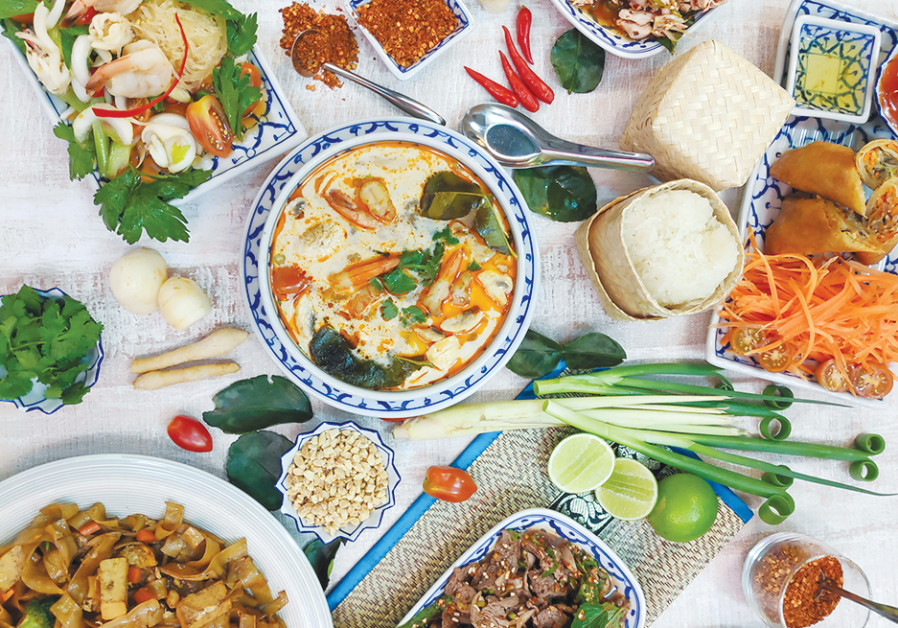A well-known local culinary phenomenon involves couples opening Thai restaurants, usually resulting from the union of an Israeli man marrying a woman from Thailand. Many of these successful eateries have been featured on these pages, from the venerable Thai House to the home-based Thai Chu.
The English and Hebrew food menus are not extensive, but there are more than enough tempting choices, with a few rotating dishes and daily specials. There are fairly inconsequential differences between the layouts in the two languages, the most important of which is the lack of symbols indicating degrees of spiciness in the English version, as well as the explanation that one may choose among three levels of heat. Fortunately, Rubi speaks enough English to answer any questions.

We commenced our meal with the unfamiliar Eisan delicacy Yam Won Sen, a salad of chicken or shrimp with tomato, celery and onion in a dressing made from fish sauce. This melange rests on a mostly hidden bed of submerged bean noodles, so it is important to mix the components together. This dish was quite a bit spicier than one might expect from the icon that designated it as the lowest level of heat; but this combination of glass noodles, crunchy celery, plump shrimp and piquant sauce added up to a most auspicious beginning.
Next was Nam Tok, the cold beef appetizer that is practically a staple of many Thai restaurants; however, the texture of this version was quite different. Derived from a family recipe of the chef, the sirloin was served not in slices, but as chopped rump steak seasoned with mint, onion, toasted and grated rice and fish sauce. Reminiscent of what looks like beef larb in other Thai eateries, this satisfying dish left a pleasant tingle of heat on the palate.
We were then guided by our host’s enthusiastic recommendation of the Khao Soi Chicken, a soupy curry from northern Thailand served in a deep bowl with a small ladle for dividing into sharing portions. This complex coconut milk curry – redolent with scallion, coriander and pickled mustard leaves – was chock full of thick wheat noodles, and further topped off with extra crispy noodles. This extraordinarily filling dish was absolutely delicious, and a real challenge for even two people to polish off.
Still, we could not resist trying the special of the day: Pad Ped Maung, a wok masterpiece that revolved around morsels of battered chicken skillfully stir fried with al dente red and green peppers and peppered with a generous scattering of cashew nuts, all coated in an addictive sweet-and-savory sauce made with chili paste and crispy garlic. It came with a large mound of steamed rice that we were not able to finish, even if there were enough sauce to be soaked up by the white grains.
Dessert was such a no-brainer that it was brought out by the chef with no recitation of additional options. It is now mango season, which means it is time for classic mango with sticky rice. Usually, the presentation is rather straightforward – but here it came with extra mango: not only cubed while still attached to the peel, by peeled and sculpted in the shape of a multi-petaled flower. Add to that a gentle dune of sticky rice drizzled with an amazing sauce made from imported palm sugar, and we enjoyed the best version of this Thai favorite I have experienced in this country.
